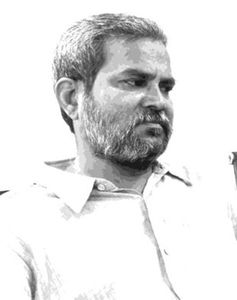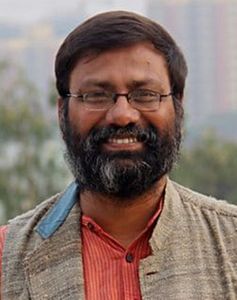THE BODY OF a 33-year-old journalist, Mukesh Chandrakar, was discovered in a septic tank near a contractor’s home in Bijapur, Bastar, on January 3. Within days, the police arrested the contractor’s brothers and then the contractor himself in the murder case. Chandrakar, who ran the popular YouTube channel Bastar Junction, had frequently reported on corruption, tribal rights and the ongoing Maoist conflict with security forces. He had recently exposed a road construction scam involving the arrested contractor.
Chandrakar was one of seven journalists who had played a pivotal role in securing the release of a captured CRPF Cobra commando, Rakeshwar Singh Manhas, on April 8, 2021. Manhas had been taken hostage after a Maoist ambush that left 22 security troops dead at Jonaguda on the border of Bijapur and Sukma districts of Chhattisgarh on April 3. Many more were wounded in the Maoist attack.
Chandrakar and his elder brother, journalist Yukesh, had ventured deep into Maoist-controlled forests in the area along with Ganesh Mishra, 39, of the local daily Pratah India and four other local journalists ― K. Shankar, Ranjan Das, Chetan Kapewar and Ravi Punje. Government-appointed mediators for the release of the commando accompanied them. Mishra was one of three journalists whom the Maoists had notified about Manhas’s life in captivity. The journalists’ bold initiative and firm contacts within the dense forests led to the commando’s release after the Maoists held a “public trial” of the commando.
Like several of his peers, Chandrakar walked a fine line while reporting from the interiors of Bastar, where Maoists have mounted a decades-long insurgency against state forces. Any misstep could result in life-threatening consequences for the local journalists.
Journalists in Bastar are often seen as being aligned with either the state or the Maoists― sometimes both. There are, however, a handful of local journalists who try to walk the narrow neutral path. Just two months before taking the commando captive, the Maoists had issued death threats against Ganesh Mishra and two other journalists, Shubhranshu Choudhary and Leeladhar Rathi, accusing them of being “agents” of the state and industrial corporations. A strong protest by local journalists forced the Maoist leadership to retract their threats.
“This shows the contradictory and challenging situations we face every day,” Mishra told me soon after the release of the commando.
Chandrakar himself had faced numerous obstacles. In June 2021, after covering protests against a new CRPF camp in Silger, he revealed how he and his colleagues were stopped more than 30 times by the security forces while travelling from Bijapur to Silger. “I even received calls from senior police officers warning me that I was under surveillance,” he told me a few days later. Three protesters had been killed allegedly in police firing in Silger the previous month.
Earlier in 2015, the Maoists had held Chandrakar and his brother at gunpoint at Nambi in Usoor, asking them what they were doing in that area of Maoist influence. “I thought of my sister-in-law and my little nephew and niece while both of us brothers were staring at death,” Chandrakar said. “At times like this, one feels like giving up journalism or getting into yellow journalism to mint money like many do. But every time, passion for journalism wins.” Chandrakar chose to persevere.
The risks for journalists in Bastar are real and deadly. In 2013, the Maoists killed two journalists, Nemichand Jain of Sukma and Sai Reddy of Bijapur, for allegedly being police informers. In 2018, Doordarshan cameraman Achyutanand Sahu was killed in a Maoist ambush in Dantewada.
By 2021, fewer than a dozen local journalists dared to cover the conflict in Bastar. Around 400 others chose safer subjects like tourism and tribal culture to avoid the associated risks of hard reporting on the war between the Maoists and the state.
For many journalists in Bastar, the lack of financial support is as challenging as the physical dangers. Most work on a per-story basis, earning meagre amounts ―sometimes as little as Rs150 to Rs300 per report in 2021. Many local journalists double as marketing or circulation executives for media outlets, earning commissions rather than salaries. Ganesh Mishra said he could continue as a journalist because income from agriculture sustained his family.
It is extremely difficult for a local journalist in Bastar to make a living out of journalism, said the journalist Kamal Shukla, 56, who faced sedition charges over a Facebook post in 2018. “Most local journalists cannot sustain themselves on journalism alone, so they run grocery shops, sell forest produce or work as contractors,” he told me three years ago.
The side hustles, he said, took the edge off their journalism and compelled them to make compromises. He said that, as much as physical threats, financial pressures forced the journalists to avoid writing anything critical of local authorities. “The pressure from the government is often greater than from the Maoists,” he said.
After being slapped with sedition charges, Shukla had to ‘abscond’ for several months to evade arrest. This disrupted his family life and the education of his three children. He runs his daily newspaper Bhumkal Samachar through crowd funding, having no other source of income.
Most journalists in Bastar lack the training and resources to navigate a conflict zone. Former BBC journalist Shubhranshu Choudhary, who founded CG-Net Swara to highlight issues in Chhattisgarh and received Maoist death threats along with Ganesh Mishra and Leeladhar Rathi, said many local journalists were often forced to rely on press releases from the police or the Maoists.
“They have courage and local knowledge, but they need proper training and financial security to become more effective reporters,” Choudhary told me in 2021.
“Earlier it was mostly international media like the BBC, and The New York Times that broke stories from the conflict region. The national media would only follow up. But with the arrival of mobile and internet networks in the interiors of Bastar, local journalists have started making a splash,” he said.
Despite the occupational hazards, journalists play a crucial role in Bastar. Inspector General of Police P.. Sundarraj, who has been working in the area for several years, acknowledged their importance in shaping public perceptions and holding both the state and the Maoists accountable. “The media is essential for establishing peace and order in Bastar,” he told me after the release of Manhas.
“Journalism in the left wing extremism affected areas of Bastar is challenging for reasons such as inaccessibility, tough terrain, fear of Maoists, IED blasts and certain other adverse situations,” he said. “In spite of these challenges, the journalists have brought out the correct perception of the region.
Yet, for many journalists, the road ahead remains fraught with danger, uncertainty and sacrifice. Their commitment to reporting the truth, however, continues to shine a light on one of India’s most challenging regions.




